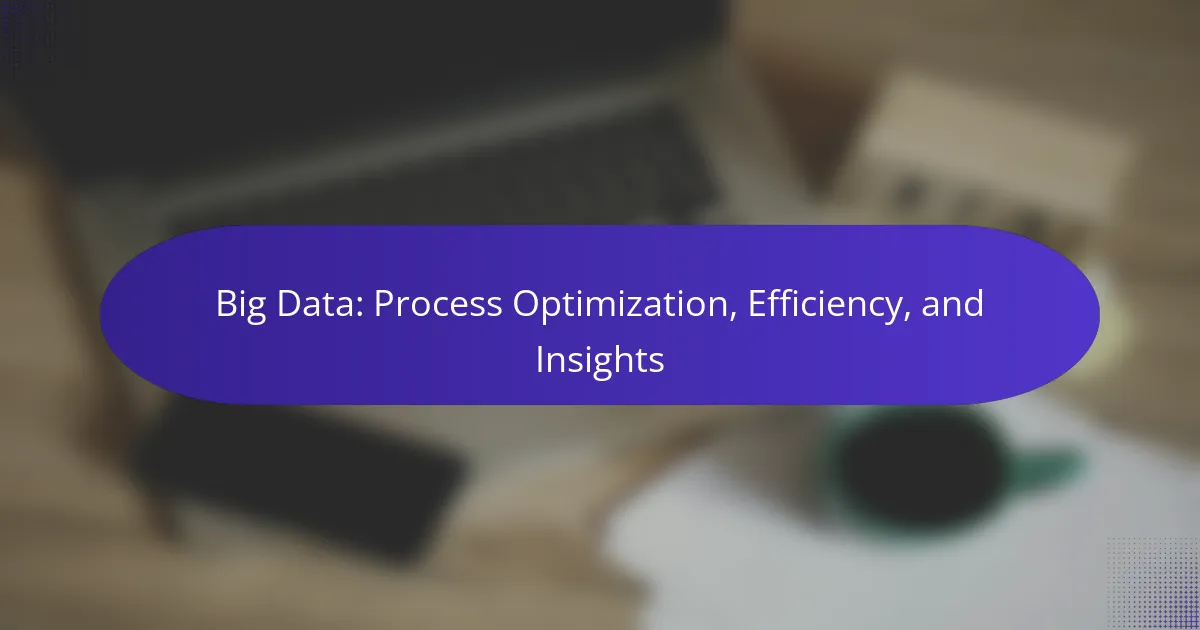Real-time data analytics empowers organizations to make swift, informed decisions by providing immediate access to the latest insights. This capability enhances operational efficiency, supports strategic planning, and drives growth across various sectors, including finance, healthcare, and retail. By leveraging real-time data, businesses can optimize their operations and improve customer satisfaction, ultimately gaining a competitive edge in the market.
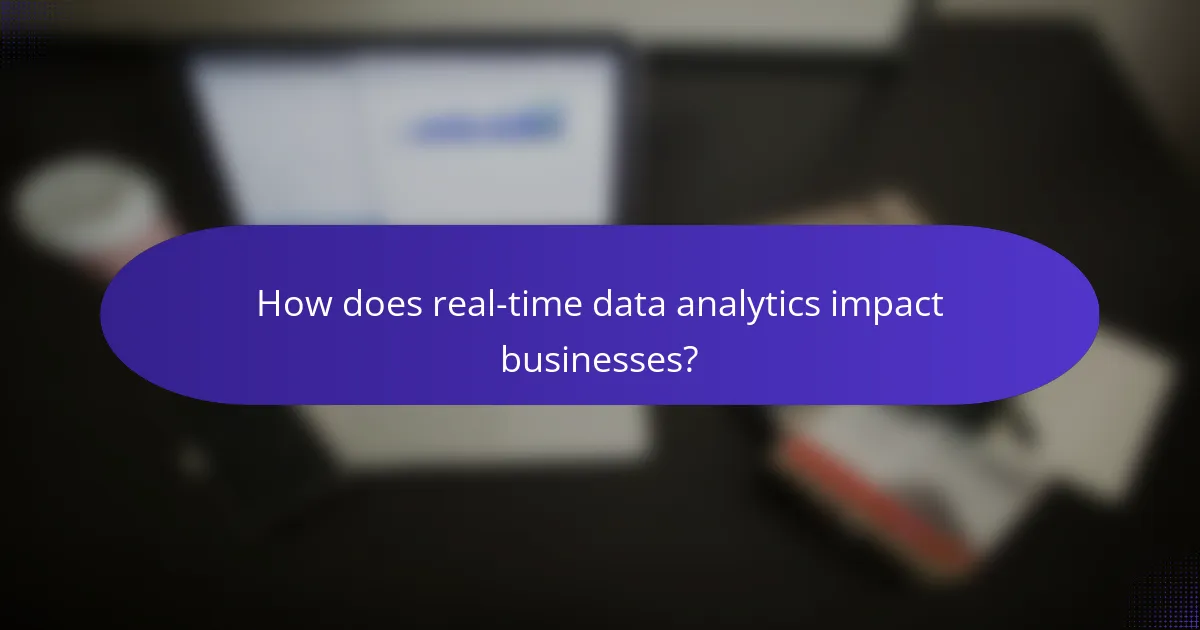
How does real-time data analytics impact businesses?
Real-time data analytics significantly impacts businesses by enabling them to make informed decisions quickly based on the latest information. This capability fosters agility, enhances customer satisfaction, and optimizes operations, ultimately driving growth and competitiveness.
Increased decision-making speed
Real-time data analytics allows businesses to process information as it occurs, leading to faster decision-making. For instance, companies can monitor sales data in real-time to adjust inventory levels promptly, preventing stockouts or overstock situations.
To leverage this speed, organizations should implement automated reporting tools that provide instant insights. Avoid relying solely on historical data, as it may not reflect current market conditions.
Enhanced customer experiences
By utilizing real-time data analytics, businesses can tailor their offerings to meet customer needs more effectively. For example, retailers can analyze customer behavior on their websites to personalize promotions and improve user engagement.
To enhance customer experiences, consider integrating customer feedback loops that utilize real-time data. This approach helps identify pain points quickly and allows for immediate adjustments to services or products.
Improved operational efficiency
Real-time data analytics streamlines operations by identifying inefficiencies and bottlenecks as they arise. For instance, manufacturers can monitor equipment performance in real-time to predict maintenance needs, reducing downtime and repair costs.
Implementing dashboards that visualize operational metrics can help teams respond swiftly to emerging issues. Ensure that all departments have access to relevant data to foster a culture of continuous improvement.
Competitive advantage
Businesses that adopt real-time data analytics gain a competitive edge by responding more swiftly to market changes and customer demands. This proactive approach allows them to capitalize on emerging trends before their competitors do.
To maintain this advantage, companies should invest in robust data infrastructure and analytics tools. Regularly assess the effectiveness of these tools to ensure they meet evolving business needs and market conditions.
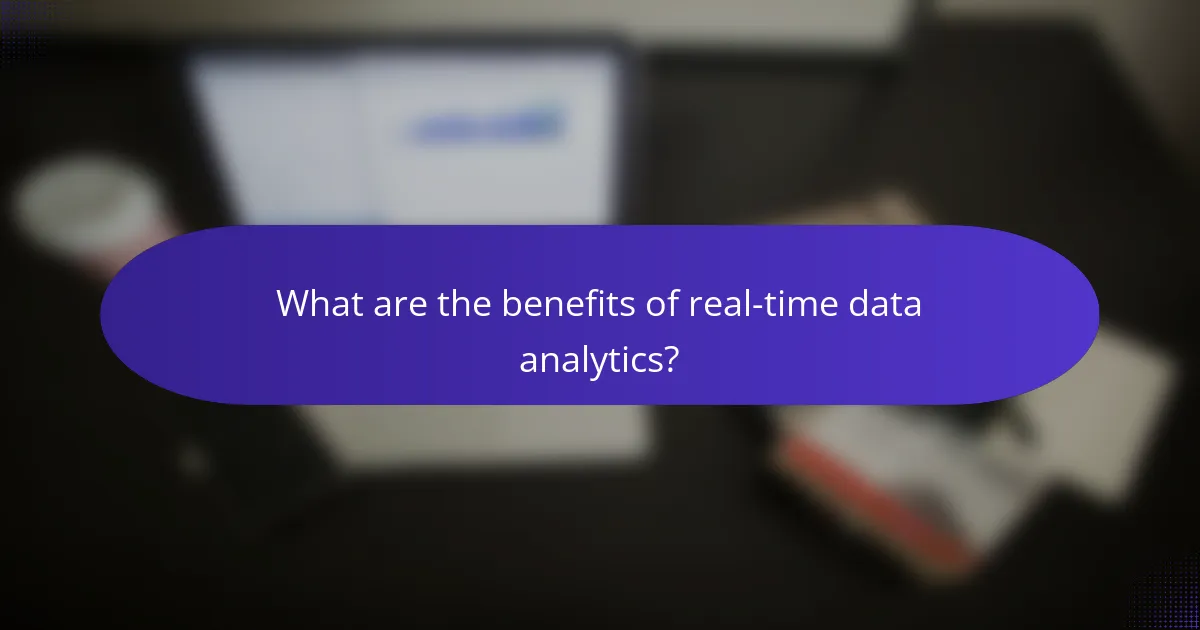
What are the benefits of real-time data analytics?
Real-time data analytics provides immediate access to insights, enabling organizations to make informed decisions quickly. This capability enhances operational efficiency, supports strategic planning, and can lead to significant cost savings.
Immediate insights
Real-time data analytics allows businesses to gain immediate insights into their operations and customer behaviors. For instance, retailers can monitor sales trends as they happen, adjusting inventory and marketing strategies on the fly. This immediacy helps organizations respond to changes in demand or market conditions without delay.
By leveraging real-time analytics, companies can identify issues as they arise, allowing for prompt corrective actions. For example, a manufacturing firm can detect equipment malfunctions early, minimizing downtime and maintaining productivity.
Data-driven strategies
With real-time data analytics, organizations can develop data-driven strategies that are more aligned with current market conditions. This approach enables businesses to tailor their offerings based on real-time customer feedback and preferences. For example, a streaming service can adjust its content recommendations based on viewer habits observed in real time.
Implementing data-driven strategies often leads to improved customer satisfaction and loyalty, as businesses can provide personalized experiences. Companies should focus on integrating real-time analytics into their decision-making processes to remain competitive.
Cost reduction
Real-time data analytics can lead to significant cost reductions by optimizing resource allocation and minimizing waste. For instance, logistics companies can track shipments in real time, allowing them to streamline routes and reduce fuel costs. This efficiency can translate into lower operational expenses.
Additionally, businesses can avoid costly mistakes by using real-time data to inform their decisions. For example, a financial institution can detect fraudulent transactions instantly, preventing potential losses and enhancing security measures.
Risk management
Real-time data analytics plays a crucial role in effective risk management by providing timely information that helps organizations identify and mitigate risks. Companies can monitor market fluctuations and adjust their strategies accordingly to minimize financial exposure. For example, an investment firm can react quickly to sudden market changes, protecting client assets.
Moreover, real-time analytics can enhance compliance by ensuring that organizations adhere to regulations as they evolve. By continuously monitoring relevant data, businesses can stay ahead of potential legal issues and maintain their reputations.
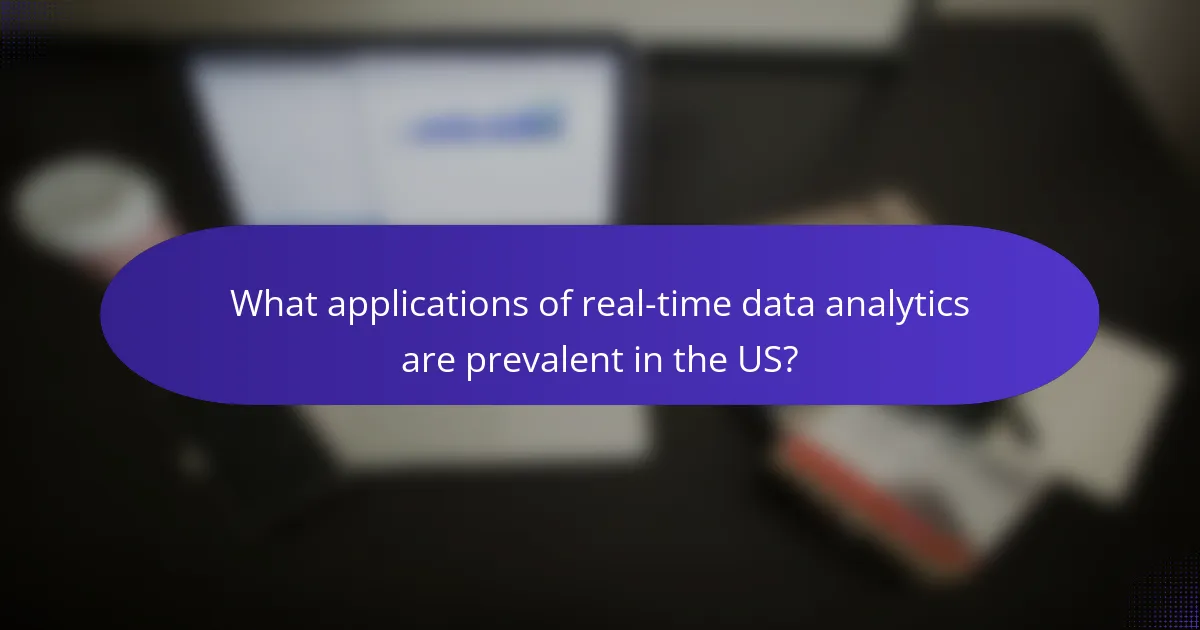
What applications of real-time data analytics are prevalent in the US?
Real-time data analytics is widely used across various sectors in the US, enabling organizations to make immediate decisions based on current data. Key applications include financial services, healthcare monitoring, retail inventory management, and smart city infrastructure.
Financial services
In the financial services sector, real-time data analytics is crucial for risk management, fraud detection, and trading strategies. Institutions analyze market trends and customer transactions instantly to identify anomalies and respond to potential threats. For example, algorithms can detect unusual spending patterns in seconds, allowing banks to flag potentially fraudulent activities.
Additionally, real-time analytics support high-frequency trading, where milliseconds can significantly impact profits. Firms leverage these insights to optimize their trading strategies, ensuring they remain competitive in a fast-paced market.
Healthcare monitoring
Real-time data analytics plays a vital role in healthcare monitoring by enabling continuous patient observation and timely interventions. Wearable devices and remote monitoring systems collect data on vital signs, which healthcare providers analyze instantly to detect any abnormalities. This immediate feedback can lead to quicker diagnoses and more effective treatments.
Moreover, hospitals utilize real-time analytics to manage resources efficiently, such as optimizing staff allocation based on patient inflow. This responsiveness can improve patient outcomes and enhance overall operational efficiency.
Retail inventory management
In retail, real-time data analytics helps businesses manage inventory levels effectively and respond to customer demand promptly. By analyzing sales data as it happens, retailers can adjust stock levels, preventing both overstock and stockouts. This agility is essential for maintaining customer satisfaction and maximizing sales opportunities.
For instance, a store can track which products are selling quickly and reorder them instantly, ensuring shelves are always stocked with popular items. Implementing such analytics can lead to a significant reduction in excess inventory costs and improved cash flow.
Smart city infrastructure
Smart city initiatives leverage real-time data analytics to enhance urban living by optimizing traffic flow, energy consumption, and public safety. Sensors and IoT devices collect data on traffic patterns, which city planners analyze to improve transportation systems and reduce congestion. This can lead to more efficient public transit routes and better road management.
Additionally, real-time analytics can monitor energy usage across city infrastructure, enabling more sustainable practices. For example, smart grids can adjust energy distribution based on current demand, reducing waste and lowering costs for residents.
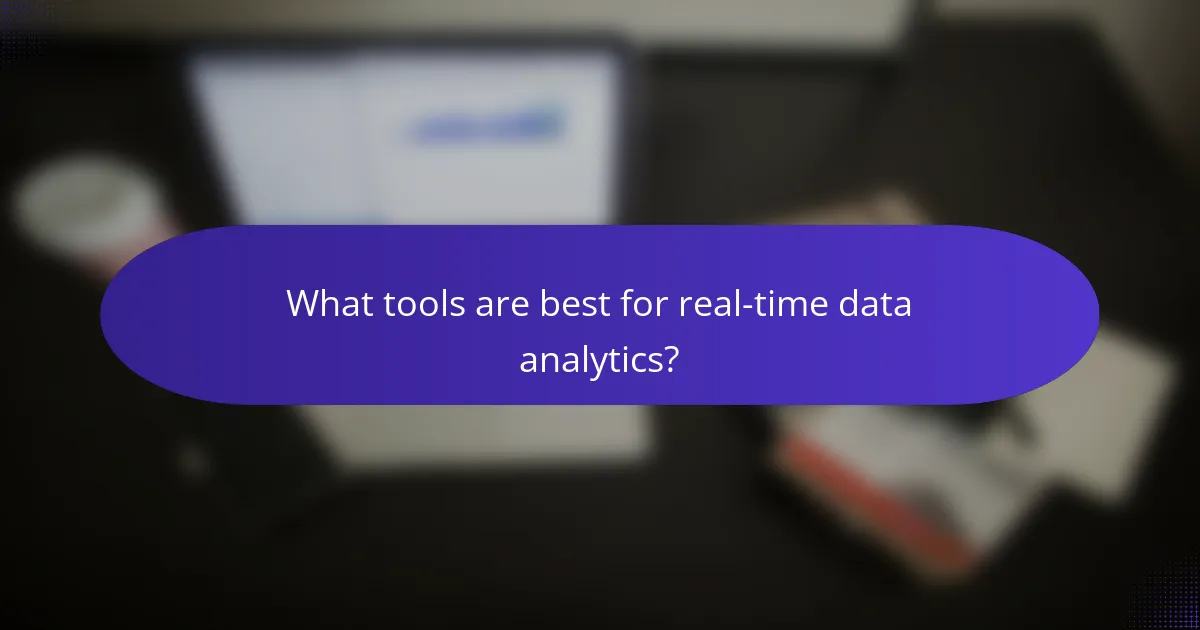
What tools are best for real-time data analytics?
Effective real-time data analytics tools enable organizations to process and analyze data as it is generated, facilitating timely decision-making. The best tools vary based on specific needs, such as data volume, integration capabilities, and user expertise.
Tableau
Tableau is a powerful data visualization tool that allows users to create interactive and shareable dashboards. It connects to various data sources and provides real-time analytics capabilities, making it suitable for businesses that need immediate insights from their data.
When using Tableau for real-time analytics, consider its ability to handle large datasets and its integration with cloud services. Users can easily filter and drill down into data, which enhances the decision-making process.
Google Analytics
Google Analytics is widely used for tracking website traffic and user behavior in real-time. It provides insights into user interactions, conversion rates, and traffic sources, which are essential for optimizing marketing strategies.
For effective use of Google Analytics, set up real-time reporting to monitor key performance indicators (KPIs) as they happen. This allows businesses to quickly adjust campaigns based on user engagement and behavior trends.
Apache Kafka
Apache Kafka is an open-source stream processing platform designed for handling real-time data feeds. It excels in managing large volumes of data and is often used in conjunction with other analytics tools to facilitate real-time data processing.
When implementing Apache Kafka, ensure proper configuration for data throughput and latency. It is ideal for organizations needing to process data from multiple sources simultaneously, such as IoT devices or user activity logs.

